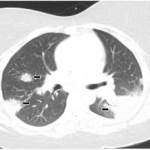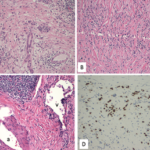ACR CONVERGENCE 2021—Moderated by Dan Mandel, MD, a rheumatologist and associate clinical professor of medicine, the University of California, Irvine, the session Update on Extrapulmonary Sarcoidosis offered participants a multidisciplinary review of the features and management of systemic sarcoidosis.
Neurology
Jeffrey M. Gelfand, MD, associate professor of clinical neurology at the University of California, San Francisco, gave the first presentation, which he summarized as “what neurologists want rheumatologists to know about recognizing and treating neurosarcoidosis.”
He explained that although neurosarcoidosis was traditionally believed to affect approximately 5–10% of all sarcoidosis patients, a more recent series revealed that as many as 15–25% of sarcoidosis patients had evidence of neurosarcoidosis.1 Whatever the actual incidence, Dr. Gelfand emphasized that neurologic involvement increases the risk of morbidity and mortality in patients with sarcoidosis.
“A key clinical teaching point,” said Dr. Gelfand, “is that most—approximately 50–70%, of neurosarcoidosis patients—particularly patients with central nervous system neurosarcoidosis, present with the neurologic syndrome.”1 This neurosarcoidosis presentation then leads to a sarcoidosis diagnosis. According to Dr. Gelfand, in approximately 10–20% of patients, neurosarcoidosis may also occur as isolated to the nervous system. “So although isolated neurosarcoidosis is rare, it’s not that rare,” he emphasized.
In 2018, the Neurosarcoidosis Consortium updated the consensus diagnostic criteria for neurosarcoidosis.2 The bottom line, according to Dr. Gelfand, is that a diagnosis of neurosarcoidosis is made when the clinical presentation and diagnostic evaluation are consistent with neurosarcoidosis with a clinical syndrome typical of granulomatous invasion of the nervous system.
Patients should have pathological evidence of sarcoidosis in the central nervous system or peripheral nervous system for a definite diagnosis. If the patient has pathologic evidence of sarcoidosis elsewhere in their body and a consistent clinical syndrome, they are given a diagnosis of probable neurosarcoidosis.
Absent pathologic confirmation of granulomatous disease, the patient is given a diagnosis of possible neurosarcoidosis. “In many cases probable neurosarcoidosis is as close as we can reasonably get,” said Dr. Gelfand, “for example, in patients with spinal cord or brainstem disease.”
In all cases—definite, probable and possible neurosarcoidosis—diagnosis requires rigorous exclusion of other causes, particularly infection and malignancy. “It is this rigorous exclusion of other causes that keeps me up at night as a clinician,” said Dr. Gelfand.
In all cases—definite, probable & possible neurosarcoidosis—diagnosis requires rigorous exclusion of other causes, particularly infection & malignancy.



